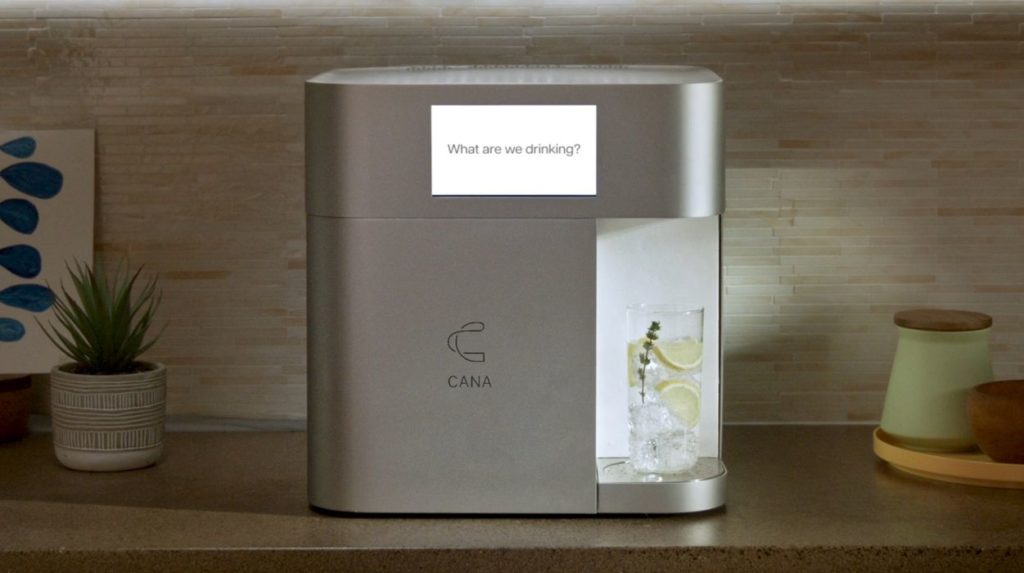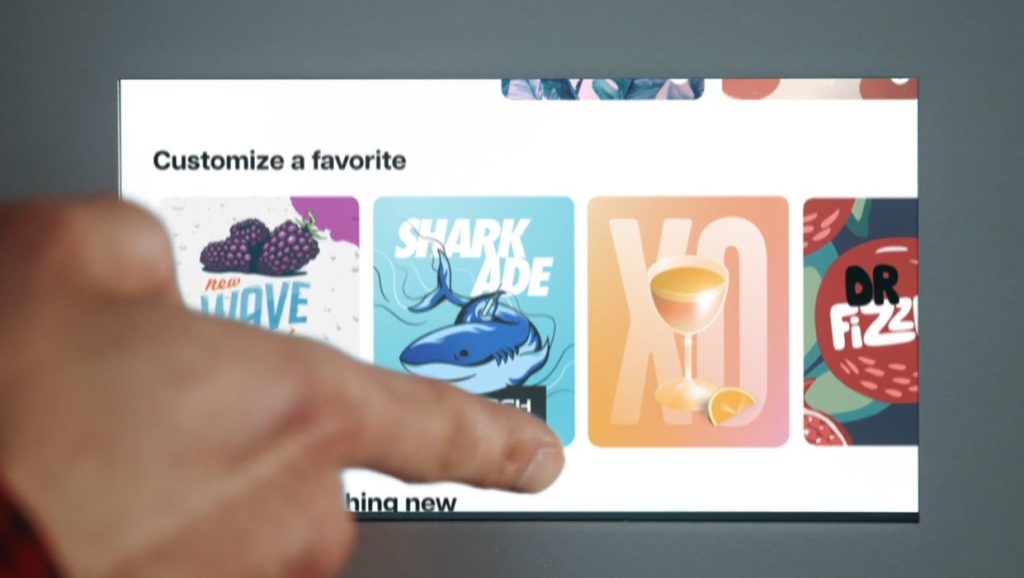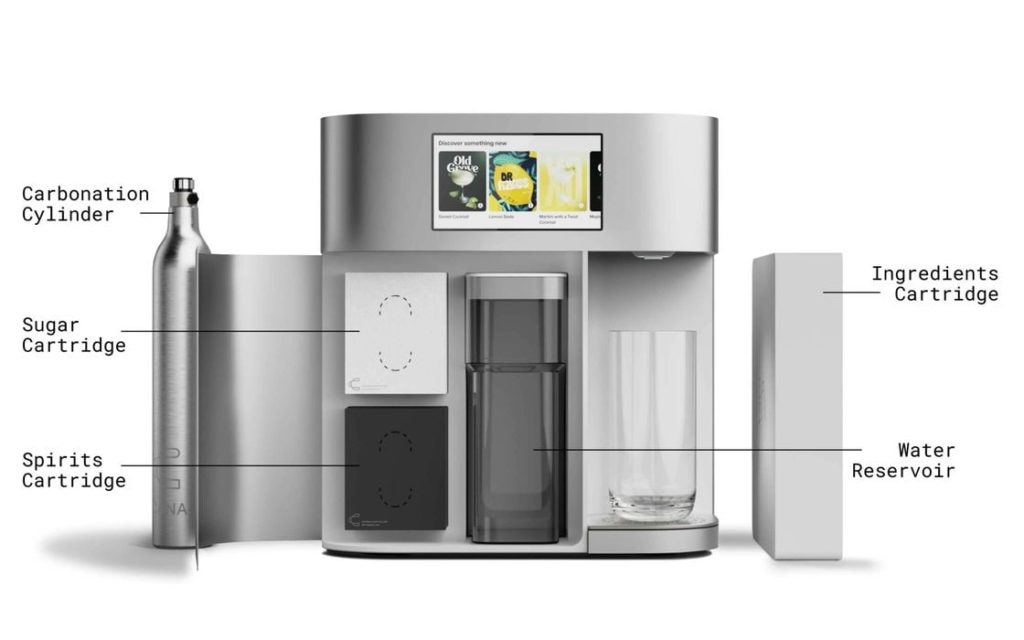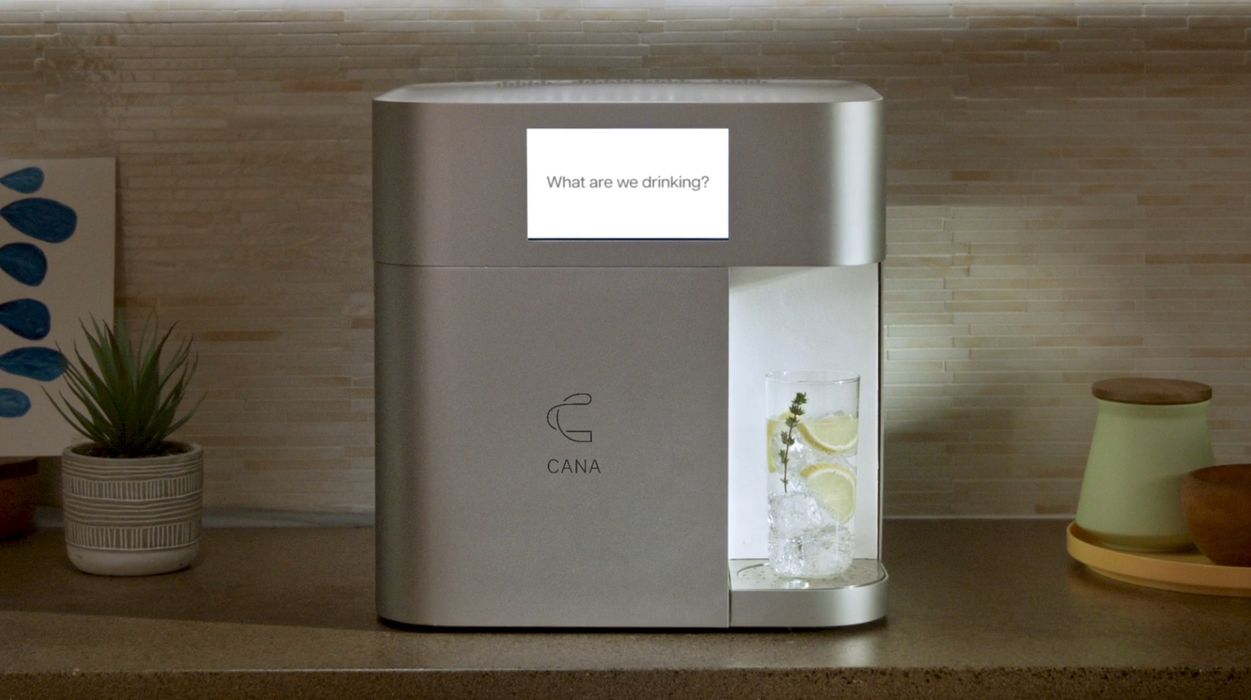
A company has announced a “beverage printer”.
3D printing technology takes many forms. Although we’re all more familiar with the production of mechanical parts, other methods include bioprinting and even more unusual approaches.
This one is new to me: “molecular beverage printing”. The idea is that you have a desktop device that can, on command, “print” a consumable beverage of almost any type.
Cana announced the “Cana One” beverage printer. The device is to be sold for US$799, with early bird reservations at only US$499.

The system uses a large database of drink recipes that you can scroll through for selection, or you can even design your own. Cana said there are “1000s of beverages”, including juice, coffee, cocktails and many more. I get the impression Cana wants to develop a community of beverage designers that would market their drinks through the Cana One system.

Aside from the vast choice of drinks, there is another benefit to the Cana One: it should dramatically cut down on the use of disposable and recyclable bottles, as there would be no need for them when using the Cana One.
Hold on, this is crazy, isn’t it?
How could this work? Yes, all drinks are made from molecules, and theoretically you could make any drink by simply assembling the correct combination of molecules.
But where do these molecules come from? How are they selected and assembled. There are, after all, quite a number of different molecules in the world.

The vague answer from Cana is that they’re stored in several consumables:
- A carbonation cylinder
- A sugar cartridge
- A spirits cartridge
- A water reservoir
- An “Ingredients Cartridge”
I can understand all of those, except for the last one, the “Ingredients Cartridge”. This would be where all the magic molecules of flavor are stored and somehow extracted for beverage production.
Cana said the Ingredients Cartridge is good for about a month, when it must be replaced. This tells me you will be basically on a drink subscription service if you opt in on a Cana One. However, it’s unknown what monthly price the cartridge might carry. However, Cana does indicate the cost of typical drinks:
- Sparkling waters: US$0.29
- Iced Teas: US$0.79
- Craft Cocktails: US$2.99
Those are reasonable prices, so presumably the cartridge cost would follow. Cana may be attempting to make their money on scale, not high margins.
What is inside that Ingredients Cartridge? How can it possibly contain all the variety of molecules required to produce thousands of different drinks? Or are drinks less complex than I imagine?
It may be that Cana scientists have somehow reduced drink composition to a much smaller set of substances that, in combinations can reproduce the majority of common drink flavors.
This is a very curious project. They don’t reveal enough about their technology for me to be confident that it works, and that raises my suspicions. Could this be a scam? Will they really deliver the Cana One in 2023 as they say?
As much as I’d like to have a magic drink machine like this, I am skeptical. I want to see this to believe it first, as are likely many other people.
On the other hand, I hope it succeeds, because having people adopt the notion of being able to produce useful items in their homes using advanced equipment could be a powerful boost to conventional 3D printing.
Via Cana

